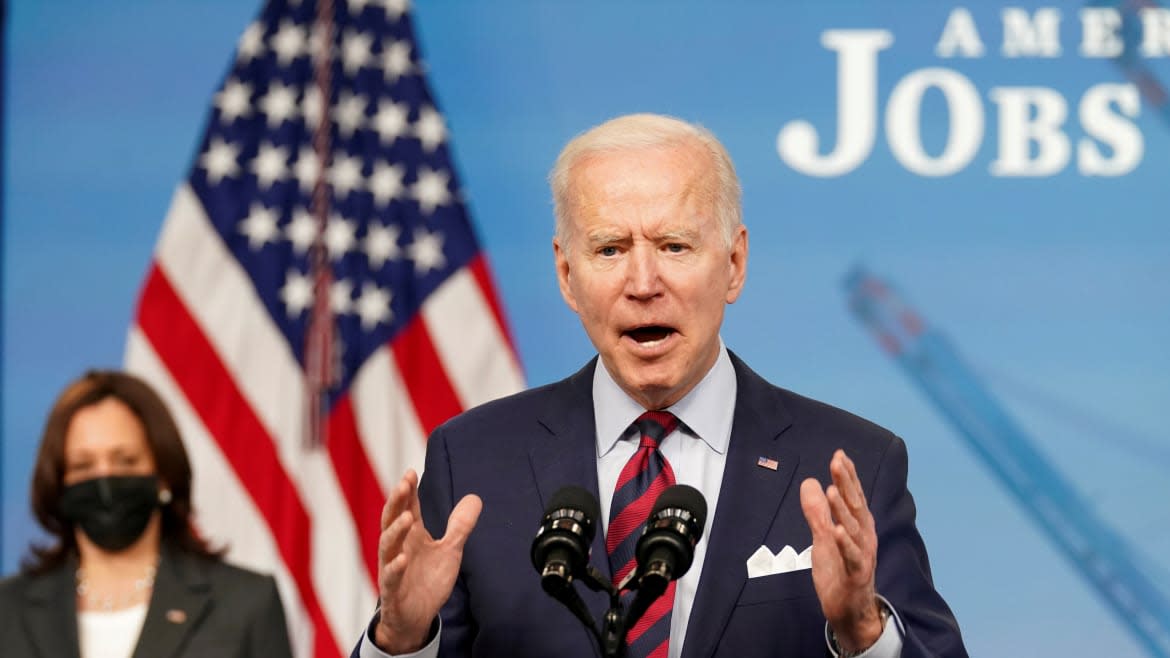Biden’s First Budget Aims to ‘Reverse’ Trump Cuts to CDC, Climate, Schools

The White House is calling for a massive reinvestment in education, housing, and other core public services in its first budget proposal submitted to Congress on Friday, in the hopes of “reversing” stark cuts to non-defense spending of the previous administration.
“We want to use every lever at our disposal to address the challenges we face,” an administration official told reporters in a background briefing outlining the discretionary budget request, calling it “a complementary but separate proposal” to President Joe Biden’s trillion-dollar jobs plan. “In the budget we release in the coming months, we’ll put forward a unified agenda for the country that will pull all of these pieces together.”
The so-called “skinny budget”—which includes topline discretionary spending goals but is not a full-fledged budget—includes $769 billion in non-defense discretionary spending for Fiscal Year 2022, a 16 percent increase over the previous fiscal year. The proposal also outlines $753 billion in discretionary defense spending, a 1.7 percent increase.
“This moment of crisis is also a moment of possibility,” wrote Shalanda Young, acting director of the Office of Management and Budget, in a letter to leaders of the House and Senate Appropriations and Budget Committees in which she called the upcoming appropriations process “another important opportunity to continue laying a stronger foundation for the future and reversing a legacy of chronic disinvestment in crucial priorities.”
CDC Updates Travel Guidance, Says Vaccinated People Can Travel Domestically Without Test
Unsurprisingly, one of the biggest potential winners in the proposal is the Centers for Disease Control and Prevention, for which the skinny budget proposes an $8.7 billion hike to support core public health capacity, the biggest budget authority increase for the agency in nearly two decades. According to a fact sheet provided by the administration, the additional funding—coming after CDC funding had fallen by 10 percent over the previous decade, adjusted for inflation—will be used to “modernize public health data collection nationwide, train new epidemiologists and other public health experts, and build international capacity to detect, prepare for, and respond to emerging global threats.”
The discretionary budget also includes increased funding for a laundry list of key Democratic priorities, from a $14 billion increase in climate change investments to a $20 billion increase for Title I funding for public schools with large low-income student populations—the largest year-over-year increase since the inception of the program. The proposal also calls for a more than 10 percent increase in funding for the Department of Justice to support improving background check systems for firearm purchases, as well as new programs intended to encourage states to adopt gun licensing laws and gun buyback programs.
Administration officials were quick to caution that the discretionary budget proposal is just the first step in an arduous process to draft and pass a federal budget, but they felt that the skinny budget will help “set a tone” for potentially funding programs with bipartisan support.
“There are a lot of bipartisan programs you will see highlighted when you take a look through what the president is championing,” the official said. “Cancer research: that is a bipartisan interest; violence against women. This is something we hope will start a discussion about the right size of non-defense discretionary [spending].”
Get our top stories in your inbox every day. Sign up now!
Daily Beast Membership: Beast Inside goes deeper on the stories that matter to you. Learn more.
